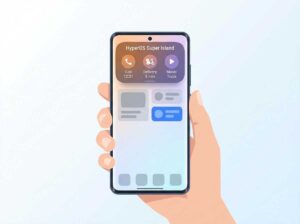Today, hackers are everywhere. And most of the time, they are after 1 thing, customer’s data.
As an app developer, it is your job, to protect them. Here’s how:

Table of Contents
Apply Secure Coding
At the heart of every application, there’s a spine — its code.
It’s the DNA that grants your app life! But folks, this DNA can also be its Achilles heel. A 2019 report by the National Vulnerability Database showed a staggering number of total vulnerabilities of 17,308.
With these numbers, one thing is clear: Bugs and code vulnerabilities are the playgrounds that most attackers frolic in. Remember, dear readers, they’re the doorways adversaries primarily use to break into an application.
- Practicing secure coding
- Making your code resilient
These above points are far from being options. They’re necessities for any developer striving to keep their app secure from invaders.
By infusing secure practices into your code writing, you, effectively, harden your code. It’s as if you’re fortifying your castle’s walls, making it a challenge for any invader to break through.

Activate the Encryption
Next on our list is the magic trick of code masters — Encryption!
It’s the art of transforming your data into a mystical cipher that’s incomprehensible to unauthorized folks. It’s a powerful weapon. A tool that, when wielded properly, can protect your fortress of data against an onslaught of prying eyes.
You can encrypt anything sensitive:
- Passwords
- Credit card details
- Personal identification numbers
The 2020 Cost of a Data Breach Report from IBM revealed that securing your data can reduce the cost of a data breach by $1.76 M. You see, encryption isn’t just important – it’s critical.
More on TechInDeep:
- Endpoint Backup Best Practices: Tips for Successful Implementation and Management
- WhatsApp Business API Integration: Seamless Integration for Business Success
- Are QR Codes Safe?
Strengthen Authentication Mechanics
Let’s turn our attention to gatekeepers now — authentication mechanisms.
Ever heard of two-factor authentication (2FA)? It’s a magic spell, my friends! A potent enchantment that prevents unauthorized access like a steadfast sentinel. When you use robust authentication methods, only the deserving (i.e., authorized users) have access privileges to your app.
Common 2FA Methods are:
- SMS-based 2FA: A widely used method that utilizes text messages for sending one-time codes.
– Easy to set up and use.
– However, susceptible to SMS interception and SIM swapping attacks.
- Authenticator apps: Another popular option, consisting of dedicated apps like Google Authenticator or Authy.
– Typically considered more secure compared to SMS-based 2FA.
– Not reliant on the user’s phone network, which reduces some risks.
- Hardware tokens: Physical devices that generate one-time codes, such as YubiKey.
– Highly secure and less susceptible to phishing attacks.
– Requires users to keep track of the physical token, which can be lost or stolen.
Benefits of Incorporating 2FA are:
- Reduced risk of unauthorized access: Provides an additional layer of security beyond passwords.
- Improved user trust: Demonstrates your commitment to user security and privacy.
- Lowered incidence of data breaches: Adds a roadblock for would-be attackers, helping to prevent data leaks and other detrimental outcomes.
Take Care of Authorization and Access Control
Now, let’s dig deeper into authorization — the art of granting permissions.
You see, user data is precious. It needs to be stringently guarded. That’s where authorization and access control mechanisms swoop in, like knights in shiny armor.
They ensure that users only gain access to the data they’re allowed to. Take, for instance, how a private library operates. Each reader can access only certain bookshelves — not the entire library. Similarly, with effective access control, each user gets carefully monitored and controlled data access.
Storing Data Securely
Data, my programming comrades, is your goldmine! It’s your treasure trove that holds gems like user information and preferences. The Ponemon Institute’s 2020 data breach report highlights that the global average cost of a data breach is $3.86 million.
Those digits tell you one thing: It’s both valuable and vulnerable. That’s why, it’s important to learn the comparison of antivirus such as McAfee and Norton. That way, you can find out which one is best for your company. Furthermore, you need to fortify your treasure chest by using:
- Encrypted databases
- Secure cloud storage services
These practices ensure your treasure remains safe from marauders.
Securing Customer’s Communication
Remember, much like a river, data flows constantly. It courses from your app to others, from your app to websites. During this to-and-fro journey, protection is non-negotiable. Securing the data exchange process is sort of like safeguarding a governor on a state visit.
Handle Third-Party Libraries Carefully
Finally, handle third-party libraries like you would a delicate artifact. They’re great, no doubt. Yet, they can also become the chink in your armor if not treated with caution. Use only authorized APIs and be doubly cautious when dealing with libraries to lessen your vulnerability risks.
Final Thoughts
In the end, remember that these best practices aren’t just guidelines to follow reluctantly. Swear by them, and you’ll find yourself on the path to creating more secure apps. With higher security, comes greater user trust, and that, my friends, is a powerful thing to possess in this digital wilderness. Let’s march ahead, now, with heads held high and our coding keys at the ready!








MAKECOMMENT